Research Article | Vol. 3, Issue 3 | Journal of Clinical Medical Research | Open Access |
Electronic Health Records in Dental Education: A Scoping Review and Quantitative Analysis of Publications
Pedro Diniz Rebouças1,2, Lorena Walesca Macedo-Rodrigues2, Maria Tayara Marques de Freitas2, Paula Ventura da Silveira3, Iriana Carla Junqueira Zanin4*
1School of Dentistry, UNIFAMETRO, Fortaleza, Brazil. Dentistry Post-Graduate Program, Federal University of Ceara, Fortaleza, Brazil
2Dentistry Post-Graduate Program, Federal University of Ceara, Fortaleza, Brazil
3School of Dentistry, UNIFAMETRO, Fortaleza, Brazil
4Department of Microbiology and Cariology, Faculty of Dentistry, Federal University of Ceara, Sobral, Brazil
*Corresponding Author: Iriana Carla Junqueira Zanin, Department of Microbiology and Cariology, Faculty of Dentistry, Federal University of Ceara, Sobral, Brazil; Email: [email protected]
Citation: Zanin ICJ, et al. Electronic Health Records in Dental Education: A Scoping Review and Quantitative Analysis of Publications. Jour Clin Med Res. 2022;3(3):1-16.
Copyright© 2022 by Zanin ICJ, et al. All rights reserved. This is an open access article distributed under the terms of the Creative Commons Attribution License, which permits unrestricted use, distribution, and reproduction in any medium, provided the original author and source are credited.
| Received 13 Sep, 2022 | Accepted 29 Sep, 2022 | Published 06 Oct, 2022 |
Abstract
The use of Electronic Health Records (EHRs) by dentists is already a reality in several countries, including Brazil, both in private practices and in higher education institutions, also providing data for oral health surveillance and epidemiology. The purpose of this scoping review was to search the literature for publications on the importance, applicability, efficacy and ease of the use of electronic medical records in dental education. Following the terms of the PRISMA-ScR, this review sought publications on the use of EHRs in dentistry schools. The databases used in the search were Pubmed, BVS, Web of Science, Scopus and ProQuest, without language limitations and publication period, using the terms ‘Dental School’, ‘Dental Education’ and ‘Electronic Health Records’. Initially, the search resulted in 548 articles. After reading the abstract, full text and removing duplicates, 63 were included. Then, it was divided in three groups according to main thematic: EHRs implementation (n = 25); Data obtained from Dental Schools EHRs used for publications (n = 26); EHRs system efficacy and challenges (n = 12). The use of electronic medical records in the teaching of dentistry collaborates positively with the development of students during graduation. We believe that this alternative of searching and collecting information will be increasingly used in epidemiological studies, due to its practicality and objectivity.
Keywords
Electronic Health Record; Dental Education; Dental School
Introduction
Information and communication technologies are used to improve health services and it is defined as electronic Health (eHealth) [1]. Rapid advances in those technologies and applications increase new opportunities into existing health care services [2]. The initial reason for this necessity was to upgrade administrative functions of healthcare organizations due to its sizeable amount of data through health records generated [3]. Potential applications of this type of technology are health promotion and community mobilization actions; health education campaigns; epidemiological surveillance and monitoring; development of decision-making support systems [1].
In the past, these data were in the form of paper records and through enhanced informatics, they have developed into digitally stored records – Electronic Health Record (EHR) with evidence of a better filling of information than paper based systems [4,5]. There are no agreed data quality assessment framework to undertake data quality assessment in electronic health records; however, a consensus around data accuracy, completeness, consistency, credibility and timeliness has been agreed as key [6,7]. The use of EHRs has also a minor potential of cross infection when compared to paper records, principally in pandemic times [8].
In medicine, researchers have undertaken retrospective studies using the ever-growing repositories of observational data stored in Electronic Medical Records (EMR) [3]. Dentists have a long history of using computers for clinical tasks and new tools have been contributing to the analysis of the determinants of dental caries and in the decision making and its operational characteristics [9,10]. In oral research, there is the Consortium of Oral Health Research and Informatics (COHRI), a standardized data capture forms to form the “BigMouth” multi-institutional dental data repository of dental school, where real time electronic patient management systems, high volume, variety and high velocity data are routinely being generated [8,11].
Dental researchers have the potential to explore data to undertake more predictive studies to identify diagnostic patient groups, ideal care pathways and risk factors for poor outcomes [3]. Mining of these data for research has the potential, to improve dental health surveillance and epidemiology, which now is reliant on expensive surveys [12]. The aim of this integrative review to research in literature publications about importance, applicability, efficacy and ease of use of EHRs in dental education. The main idea of authors was to search what have been published until nowadays about this theme and through this, promote the support to institutions decisions about EHR implementation in dental schools in northeast Brazil.
Material and Methods
A scoping review of EHRs utilization in/for dental education was conducted in terms of the Preferred Reporting Items for Systematic Reviews and Meta Analyses Extension for Scoping Review (PRISMA-ScR) guidelines [13-19]. The main question intended to be answered was what is already published about the use of EHR in dental education. The databases used in the search were Pubmed, BVS, Web of Science, Scopus and ProQuest, without language limitations and publication period, using the terms ‘Dental School’, ‘Dental Education’ and ‘Electronic Health Records’ (Fig. 1).
Data Sources and Search Strategy
The literature search was conducted in March 2022 using terms according to review thematic in PubMed, BVS, Web of Science, Scopus and ProQuest (Grey literature). Fig. 2 shows the search strategy used and number of items found in each database, initially. No period of publication was limited in the search process and articles selection.
Study Selection Criteria and Process
Studies regarding dental education in combination with EHRs utilization (such as description, evaluation, efficacy and data assurance) were included. Studies were excluded if they were not about dental education or not performed in dental schools and not related to this review theme. Letter to editor, guest editorial or reviews were also excluded.
Two reviewers (PDR and LWMR) independently screened titles and abstracts of studies retrieved by the initial search for preliminary inclusion (Fig. 3). Disagreements were resolved through discussion. Full-text articles for all candidate studies were then reviewed for final inclusion. If there was any unclear information on a study, the study authors were contacted for clarification.
Data Extraction, Charting and Synthesis
This review approach was selected due to it may provide a coherent framework and permits the synthesis of studies that explore a wide range of research questions with various research designs. The selected articles highly presented heterogeneity, so the authors reorganized then in three groups to better understanding and categorization of those, according to main thematic: EHRs implementation (n = 25); publications with data obtained from Dental Schools EHRs by dental area of expertise (n = 26); EHRs system efficacy and challenges (n = 12).
Results
Fig. 3 summarizes the results by a flowchart of studies selection. Initially, 548 articles were retrieved. After title and abstract reading selection, 125 were evaluated based in full-text reading. After removing duplicate and applying exclusion criteria, 63 articles were selected for the final review. The selected publications range of a period from 2007 to 2022 (Fig. 4). In the first cited group EHRs implementation (n=25), the articles main thematic are listed in Fig. 5 and shows the reasons why dental schools should develop and implement EHRs [3,14-37]. Considering publications with data obtained from Dental Schools EHRs, many articles (n=26) were published based on data obtained from EHRs already implemented in dental schools all over the world and in all fields of dentistry (Fig. 6) [38-63]. The area of expertise in dentistry that most publicated were perio/implantology and Bucomaxillofacial (BMF) surgery was the one with less publications. Finally, EHR system efficacy and challenges in dental education (n=12) were reported in Table 1 according to positive and negative insights from the manuscripts [64-75]. Publications reported EHR analysis to evaluate system efficacy and data utilization for dental research, regarding the information with high accuracy and completeness. Improvement of Student’s Critical Thinking (SCRT) was also investigated and use of EHRs in dental schools impacts positively SCRT [70].
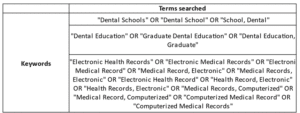
Figure 1: Keyword used in the scoping review.
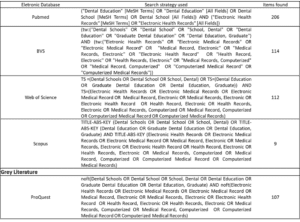
Figure 2: Search strategy used in each database and number of items found.
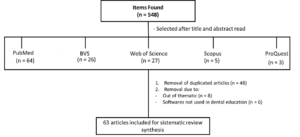
Figure 3: Flowchart of manuscripts search and selection.
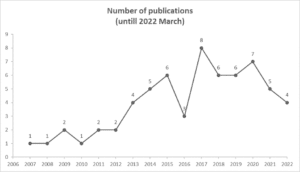
Figure 4: Number of publications with data obtained from EHRs per year.
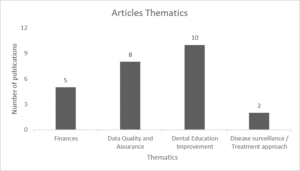
Figure 5: Main thematic supporting EHRs implementation in dental schools.
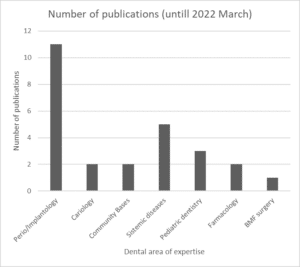
Figure 6: Publications with data obtained from EHRs by dental area of expertise
Reference | Number of Patients | Objective | Positive Insights (+) | Negative Insights (-) |
Claman, et al., 202171 | Patients = 291 | Evaluate the extent of concordance and significance of inaccuracies between a parent reported medical history in a nonintegrated Electronic Dental Record (EDR) and an integrated Electronic Health Record (EHR) | EHRs allow clinicians access to a greater depth of health history information in real time compared to nonintegrated health records | Medical history-taking |
Walji, et al., 202072 | Electronic Health Records = 1,885 | Determine how well the triggers performed in finding AEs and what characteristics dental AEs had in terms of types and severity | Triggers development to identify and measure harms after dental procedures may improve safety and quality of care delivered | Not reported |
Adibi, et al., 201973 | Electronic Health Records = 54,086 | Determine misreporting of two important health conditions at the time of dental assessment and examination | The degree of misreporting of those conditions (diabetes and hypertension) was low and the improvement of policies that support the integration of medical and dental records may improve dental quality of care | There was a relationship between increase of age and hypertension misreporting and illustrates an urgent need for policy innovation within a currently fragmented health care delivery system |
Burcham, et al., 201975 | Students = 210 Electronic Health Records = 519 | Assess student perceptions, self-reported behaviors and charting practices regarding medication documentation | Students’ perception of the importance of patient documentation may be perceived | Complete medical history and medication documentation was not importantly appreciated by the students |
Maserat, Davoodi, Mohammadzadeh, 201974 | Students = 15 | Analyze strengths, weaknesses, opportunities and threats of electronic dental and oral record implementation in clinics of School of Dentistry, Tehran University of Medical Sciences | Use of electronic dental and oral records can help to improve quality of information and ultimately leads to improvement in quality of care. | Absence of mandatory rules and standard business processes, expert and motivated specialists and finally lack of cultural infrastructure. |
Kalenderian, et al., 201876 | Electronic Health Records =100 (pilot study) | Develop EHR-based targeted dental triggers to allow for the identification of Adverse Events from electronic dental records. | Adverse events in dental patients may be detected by EHR-based triggers | Not reported |
Reed, et al., 201577 | Students = 386 | To investigate whether use of the diagnostic system and terminology terms positively impacted predoctoral dental students’ critical thinking skills and refine protocols | Utilization of EHRs with dental DDS in dental schools may impact positively student’s critical thinking | Not reported |
Walji, et al., 201478 | EHRs users = 103 | Methods for EHR evaluation | Recommendation of using three different methods (user testing, semi-structured interviews and surveys) to provide a comprehensive approach to identifying EHRs usability challenges and specific problems | EHRs evaluation is not a simple and comprehensive method and a multi-method approach is recommended |
Tokede, et al., 201379 | Diagnostic terms = 29,965 Procedure codes = 249,411 | Report of the utilization and valid entrance of the standardized dental diagnostic terminology – Ezcodes. | The correct use of a standardized dental diagnostic terminology possibilities a creation of a reliable platform for undertaking clinical, outcomes and quality improvement-related research. | There was a need for specific training of dental providers about the dental diagnosis importance and how to use terms in EHRs |
Walji, et al., 201380 | EHRs users = 92 | Evaluation of a widely used EHR interface that allow the entrance of diagnostic terms, using multi-faceted methods to identify problems and work with the provider to correct them using an interative design method. | An independent usability evaluation coupled with a close collaboration with the EHR provider offers an opportunity to better understand, prioritize and provide a timeframe to address usability issues | Main issues were related to terminologies and missing functions and concepts |
White, et al., 201181 | Dental procedures = 115,004 | Report the results of the use of a diagnostic coding system in a large dental school’s predoctoral clinical practice | Dental diagnostic terminology can be incorporated within an electronic health record and utilized in an academic clinical environment. | The principal challenges in the development of EHRs are terms choice and ease of use. |
Shelley, Johnson, BeGole, 200782 | Patients = 281 | Evaluate the use of an EHR system for assessment of quality of care in an academic dental institution. | EHR system has great | Not reported |
Table 1: Insights from articles that measured EHR system efficacy and challenges (n = 12).
Discussion
This review aimed to demonstrate the publications that included EHRs in dental education all over the years, resulting in a range in the period of 2007 to 2022, showing a highly increase of publications in the last decade. From the best of our knowledge, this is the first review with the electronic health records utilized in dental schools’ approach. Due to heterogeneity of publications, the reviewed articles were divided in three groups to better exploration and comprehension the different kind of data obtained.
The selected articles for each group were defined according to its aim or data utilized for its writing. Our strategy to summarize the data obtained from the searched databases were developed to a better understanding of what is published until now about EHRs implementation, what can be obtained from registered data and how it can support researchers in dental schools EHR implementation. Through this done, we may help other researchers interested in the field to understand what data can be obtained and how to publish it. Also, dental school administrators may have a better understanding of the importance and challenges of using electronic health records.
EHR implementation in dental schools and its design are important factors that must be planned previously any user’s utilization. The knowledge of experts in this area should be used for design, implementation and use of electronic health records [22]. Functional requirements of electronic records in dental schools are different from those in medicine and nursing and should be developed according to the users’ needs and organizational resources [76].
There are barriers that challenges EHR implementation, as the lack of comfort with technologies and the lack of prepared professionals to provide training and support to users; system configuration and maintenance; reporting writing and costs [28,37]. Some cost analysis studies can be found in literature, but only a few addresses the full spectrum of diverse implementation costs, efficiency and costs of health care [77]. Also, providing multiples opportunities for users to learn to use the system and to develop a communication plan may be a valuable tool for trying a better system utilization experience [30]. Moreover, shared experiences among institutions about EHR implementation may promote opportunities to reduce costs, time frame and failures [78].
The use of electronic health records may replace papers in dental schools but those institution must always provide patients an electronic copy of data recorded in EHRs, complying with the Privacy Rule by an e-mail or any other electronic way [17,25]. Other advantages of EHRs implementation are documentation quality and reduction of medical errors [77]. Also, the report of relevant clinical information increased 1.3-fold when compared with a paper format and fewer missing data were observed using EHR systems [79,80]. Reed, et al., reported an interesting comparison between students (n = 386) before and during the EHRs utilization, which it may impact positively student’s critical thinking associated with diagnostic system terminology [70].
Quality of information and care may also be improved utilizing dental record system by planning actions in oral diseases prevention and health promotion and clinical decision support [17,67].
One of the most recurrent difficulty determinants in using EHRs systems are the terms of choice in dental diagnostic terminology [74,32,34]. Usability issues are also important factor in dental education utilizing dental records and it is recommended a close collaboration with the EHR provider to solve those issues [71,73]. The student’s perception of the importance of patient documentation may be also observed [69]. Effort to eliminate these weaknesses turning them into strengths points may be a good strategy for encouraging investment in IT projects.
During EHRs system use, data entry process needs to be simplified to collect data periodically in a format that records episodes and enables data linkages allowing aggregation and secondary analyses for quality improvement of system and epidemiological assessments [3,24,71]. Another important point to be considered is the way of storing the data obtained. One way to a better experience is registering the information in a cloud based EHR, what offers significant cost savings and easy access, including storage data in a big repository that can be access from different institutions and share data for research [25].
Conclusion
The use of electronic health records in dental education collaborates positively with the development of students during graduation, even contributing to the improvement of critical thinking. It is also possible to audit and determine clinical decisions based on the interaction of teacher-student profiles, in addition it promotes greater ease in obtaining data previously entered the system and the possibility of linking retrospective information for research purposes. Much is being published based on the data obtained from the EHRs and we believe that this alternative of searching and collecting information will be increasingly used in epidemiological studies, due to its practicality and objectivity.
Conflict of Interest
The authors declare no conflict of interest.
References
- Rocha TAH, Fachini LA, Thume E, Da Silva NC, Barbosa ACQ, Do Carmo M, et al. Saúde Móvel: Novas perspectivas para a oferta de serviços em saúde. Epidemiol e Serv Saude. 2016;25:159-70.
- Tibes CMS, Dias JD, Zem-Mascarenhas SH. Aplicativos móveis desenvolvidos para a área da saúde noBrasil: Revisão Integrativa Da Literatura. Rev Min Enferm. 2014;18:471-86.
- Wanyonyi KL, Radford DR, Gallagher JE. Electronic primary dental care records in research: A case study of validation and quality assurance strategies. Int J Med Inform. 2019;127:88-94.
- Stausberg J, Koch D, Ingenerf J, Betzler M. Comparing paper-based with electronic patient records: lessons learned during a study on diagnosis and procedure codes. J Am Med Inform Assoc. 2003;10(5):470-7.
- Almaiman A, Bahkali S, Bahkali A, Almaiman S, Elmetwally A, Househ M. Electronic Dental Record (EDR) use in Saudi Arabia: An exploratory study. Stud Health Technol Inform. 2014;202:169-72.
- Feder SL. Data quality in electronic health records research: quality domains and assessment methods. West J Nurs Res. 2018;10(5):753-66.
- Cole AM, Pflugeisen B, Schwartz MR, Miller SC. Cross sectional study to assess the accuracy of electronic health record data to identify patients in need of lung cancer screening. BMC Res Notes. 2018;11(1):14.
- Alwhaibi M, Balkhi B, Alshammari TM, AlQahtani N, Mahmoud MA. Measuring the quality and completeness of medication-related information derived from hospital electronic health records database. Saudi Pharm J. 2019;27(4):502-6.
- Schleyer TK, Thyvalikakath TP, Spallek H. Clinical computing in general dentistry. J Am Med Inform Assoc. 2006;13:344-52.
- Silva AF, Pauferro BCS, Da Cruz GM, Trezena S, Batisat RWC. O Uso das Tecnologias de Informação e Comunicação no Ensino e em Odontologia. RevAcBO. 2019;8(1):33-9.
- Acharya A, Schroeder D, Schwei K, Chyou PH. Update on electronic dental record and clinical computing adoption among dental practices in the United States. Clin Med Res. 2017;15(3-4):59-74.
- Abramovicz-Finkelsztain R, Barsottini CGN, Marin HF. Electronic dental records system adoption. Stud Health Technol Inform. 2015;216:17-20.
- Tricco AC, Lillie E, Zarin W, O’Brien KK, Colquhoun H, Levac D, et al. PRISMA Extension for Scoping Reviews (PRISMAScR): Checklist and Explanation. Ann Intern Med. 2018;169:467-73.
- Bangar S, Neumann A, White JM, Yansane A, Johnson TR, Olson GW, et al. Caries Risk Documentation and Prevention: eMeasures For Dental Electronic Health Records. Appl Clin Inform. 2022;13(1):80-90.
- Elangovan S, Xie XJ, McBrearty C, Caplan DJ. Electronic dental record-based surveillance of non-communicable conditions. Public Health. 2021;193:146-9.
- Weber K, DaSilva AF, Dault JT, Eber R, Huner K, Jones D, et al. Using business intelligence and data visualization to understand the characteristics of failed appointments in dental school clinics. J Dent Educ. 2021;85(4):521-30.
- Cavalcante NV, Oliveira AH, De Sa BVC, Botelho G, Moreira TR, Da Costa GD, et al. Computing and oral health: Mobile solution for collecting, data analysis, managing and reproducing epidemiological research in population groups. Int J Environ Res Public Health. 2020;17(3):1076.
- Meisha DE. Evaluation of accuracy and completeness of electronic dental records in a dental school setting. Open Dent J. 2020;13(1):520-5.
- Johnson L, Callaghan C, Balasubramanian M, Haq H, Spallek H. Cost Comparison of an on premise IT solution with a cloud-based solution for electronic health records in a dental school clinic. J Dent Educ. 2019;83(8):895-903.
- Asgari I. Development an Electronic Oral Health Record application for educational dental setting. J Edu Health Promot. 2018;7:124-30.
- Yansane A, Tokede O, White J, Etolue J, McClellan L, Walji M, et al. Utilization and validity of the dental diagnostic system over time in academic and private practice. JDR Clin Trans Res. 2019;4(2):143-50.
- Sadoughi F, Sarsarshahi A, Erfannia L, Yaghoubi E. Assessing dental information requirements of electronic health records of zahedan dental school. Stud Health Technol Inform. 2017;238:28-31.
- Thierer TE, Delander KA. Improving documentation, compliance and approvals in an electronic dental record at a US dental school. J Dent Educ. 2017;81(4):442-9.
- Kalenderian E, Tokede B, Ramoni R, Khan M, Kimmes N, White J, et al. Dental clinical research: an illustration of the value of standardized diagnostic terms. J Public Health Dent. 2016;76(2):152-6.
- Ramoni RB, Asher SR, White JM, Vaderhobli R, Ogunbodede EO, Walji MF, et al. Honoring dental patients’ privacy rule right of access in the context of electronic health records. J Dent Educ. 2016;80(6):691-6.
- Chaffee BW, Cheng J, Featherstone JD. Baseline caries risk assessment as a predictor of caries incidence. J Dent. 2015;43(5):518-24.
- Wagner I V, Lex Macneil MAJ, Esteves A, Macentee MI. An electronic oral health record to document, plan and educate. Eur J Dent Educ. 2015;19(4):209-16.
- Jathanna VR, Jathanna R V, Jathanna R. The awareness and attitudes of students of one Indian dental school toward information technology and its use to improve patient care. Educ Heal Chang Learn Pract. 2014;27(3):293-6.
- Spallek H, Johnson L, Kerr J, Rankin D. Costs of health IT: beginning to understand the financial impact of a dental school EHR. J Dent Educ. 2014;78(11):1542-51.
- Walji MF, Kalenderian E, Stark PC, White JM, Kookal KK, Phan D, et al. BigMouth: A multi-institutional dental data repository. J Am Med Informatics Assoc. 2014;21(6):1136-40.
- Filker PJ, Cook N, Kodish-Stav J. Electronic health records: a valuable tool for dental school strategic planning. J Dent Educ. 2013;77(5):591-7.
- Tokede O, Walji M, Ramoni R, White JM, Schoonheim-Klein M, Kimmes NS, et al. Treatment planning in dentistry using an electronic health record: Implications for undergraduate education. Eur J Dent Educ. 2013;17(1):34-43.
- Tokede O, Walji M, Ramoni R, White JM. Treatment planning in dentistry using an electronic health record: implications for undergraduate education. Eur J Dent Educ. 2012;17:34-43.
- Hill HK, Stewart DCL, Ash JS. Health information technology systems profoundly impact users: a case study in a dental school. J Dent Educ. 2010;74(4):434-45.
- Filker PJ, Muckey EJ, Kelner SM, Kodish-Stav J. Taking a quality assurance program from paper to electronic health records: one dental school’s experience. J Dent Educ. 2009;73(9):1095-101.
- Walji MF, Taylor D, Langabeer JR, Valenza JA. Factors influencing implementation and outcomes of a dental electronic patient record system. J Dent Educ. 2009;73(5):589-600.
- Langabeer JR, Walji MF, Taylor D, Valenza JA. Economic outcomes of a dental electronic patient record. J Dent Educ. 2008;72(10):1189-200.
- Gonzalez Marrero Y, Kobayashi Y, Ihsan MS, Pilch LA, Chen L, Jiang S, et al. Altered prevalence of pulp diagnoses in diabetes mellitus patients: a retrospective study. J Endod. 2022;48(2):208-12.
- Kaye E, McDonough R, Singhal A, Garcia RI, Jurasic M. Effect of overweight and obesity on periodontal treatment intensity. JDR Clin Trans Res. 2022;11:23800844221074354.
- Tenuta LMA, Canady C, Eber RM, Johnson L. Agreement in medications reported in medical and dental electronic health records. JDR Clin Trans Res. 2022;7(2):189-93.
- Chatzopoulos GS, Cisneros A, Sanchez M, Wolff LF. Association between periodontal disease and systemic inflammatory conditions using electronic health records: a pilot study. Antibiotics (Basel). 2021;10(4):386.
- Mullins J, Yansane A, Kumar SV, Bangar S, Neumann A, Johnson TR, et al. Assessing the completeness of periodontal disease documentation in the EHR: a first step in measuring the quality of care. BMC Oral Health. 2021;21(1):282.
- Helmi M, Goodson JM, Hasturk H, Natto ZS. Annual alveolar bone loss in subjects with cardiovascular disease adjusting for associated systemic diseases and risk factors: A retrospective study. BMC Oral Health. 2020;20(1):1-10.
- Yansane A, Listl S, Dawda D, Brandon R, White J, Spallek H, et al. Increasing value, reducing waste: tailoring the application of dental sealants according to individual caries risk. J Public Health Dent. 2020;80(Suppl 2):S8-16.
- Changi K, Finkelstein J, Papapanou PN. Peri-implantitis prevalence, incidence rate and risk factors: A study of electronic health records at a U.S. dental school. Clin Oral Implants Res. 2019;30(4):306-14.
- Helmi M, Alosaimy S, Goodson JM, Hasturk H, Natto ZS. Annual alveolar bone loss in older adults taking oral bisphosphonate: A retrospective cohort study. BMC Oral Health. 2019;19(1):1-8.
- Levitin SA, Jeong IC, Finkelstein J. Mining electronic dental records to identify dry socket risk factors. Stud Health Technol Inform. 2019;262:328-31.
- Neumann A, Obadan-Udoh E, Bangar S, Kumar SV, Tokede O, Kim A, et al. Number of pregnant women at four dental clinics and the care they received: a dental quality e-measure evaluation. J Dent Educ. 2019;83(10):1158-65.
- Sukalski JMC, McKernan SC, Avila-Ortiz G, Cunningham-Ford MA, Qian F, Damiano PC. Periodontal treatment needs in the Medicaid patient population: a retrospective study in a US dental school. J Public Health Dent. 2019;79(1):53-9.
- Gordon SM, Camargo GA, Mejia GC, Sutherland JN. Use of the dental electronic health record for research: assessing demographic and oral health characteristics data for clinic patients. J Dent Educ. 2018;82(12):1249-57.
- Beukers NGFM, Van der Heijden GJMG, Van Wijk AJ, Loos BG. Periodontitis is an independent risk indicator for atherosclerotic cardiovascular diseases among 60-174 participants in a large dental school in the Netherlands. J Epidemiol Community Health. 2017;71(1):37-42.
- Guidry J, Bagher S, Felemban O, Rich A, Loo C. Reasons of repeat dental treatment under general anaesthesia: A retrospective study. Eur J Paediatr Dent. 2017;18(4):313-8.
- Hickin MP, Shariff JA, Jennette PJ, Finkelstein J, Papapanou PN. Incidence and determinants of dental implant failure: a review of electronic health records in a U.S. dental school. J Dent Educ. 2017;81(10):1233-42.
- Madsen SS, Wetterstrand VJR, Pedersen ML. Dental caries and weight among children in Nuuk, Greenland, at school entry. Int J Circumpolar Health. 2017;76(1):1311535.
- Siddiqui Z, Wang Y, Makkad P, Thyvalikakath T. Characterizing restorative dental treatments of sjögren’s syndrome patients using electronic dental records data. Stud Health Technol Inform. 2017;245:1166-9.
- Mullins JM, Even JB, White JM. Periodontal management by risk assessment: a pragmatic approach. J Evid Based Dent Pract. 2016;16:91-8.
- Chaffee BW, Cheng J, Featherstone JD. Non-operative anti-caries agents and dental caries increment among adults at high caries risk: a retrospective cohort study. BMC Oral Health. 2015;15(1):111.
- Larsen AJ, Rindal DB, Hatch JP, Kane S, Asche SE, Carvalho C, et al. Evidence supports no relationship between obstructive sleep apnea and premolar extraction: An electronic health records review. J Clin Sleep Med. 2015;11(12):1443-8.
- Thyvalikakath TP, Padman R, Vyawahare K, Darade P, Paranjape R. Utilizing dental electronic health records data to predict risk for periodontal disease. Stud Health Technol Inform. 2015;216:1081.
- Famili P, Shaya MM. Prevalence of periodontal disease by recorded indices among low income discount dental school patients. Compend Contin Educ Dent. 2014;35(10):772, 774-5.
- Ha DH, Spencer AJ, Slade GD. The accuracy of caries risk assessment in children attending South Australian School Dental Service: a longitudinal study. BMJ Open. 2014;4:e004311.
- Guggenheimer J, Barket S, Oakley M, Close J. Self-report of latex allergy by patients visiting a dental clinic. Compend Contin Educ Dent. 2012;33(10):E150-6.
- Famili P, Quigley S, Mosher T. Survival of dental implants among post-menopausal female dental school patients taking oral bisphosphonates: a retrospective study. Compend Contin Educ Dent. 2011;32(6):E106-9.
- Claman DB, Molina JL, Peng J, Fischbach H, Casamassimo PS. Accuracy of parental self-report of medical history in a dental setting: integrated electronic health record and non-integrated dental record. Pediatr Dent. 2021;15;43(3):230-6.
- Walji MF, Yansane A, Hebballi NB, Ibarra-Noriega AM, Kookal KK, Tungare S, et al. Finding dental harm to patients through electronic health record-based triggers. JDR Clin Trans Res. 2020;5(3):271-7.
- Adibi S, Li M, Salazar N, Seferovic D, Kookal K, Holland JN, et al. Medical and dental electronic health record reporting discrepancies in integrated patient care. JDR Clin Transl Res. 2020;5(3):278-83.
- Maserat E, Davoodi S, Mohammadzadeh Z. Analysis of strengths, weaknesses, opportunities and threats of electronic dental and oral records in clinics of School of Dentistry, Tehran University of Medical Sciences, Iran: A qualitative study. J Oral Heal Oral Epidemiol. 2020;9(1):24-31.
- Burcham WK, Romito LM, Moser EA, Gitter BD. Analyzing Medication documentation in electronic health records: dental students’ self-reported behaviors and charting practices. J Dent Educ. 2019;83(6):687-96.
- Kalenderian E, Obadan-Udoh E, Yansane A, Kent K, Hebballi NB, Delattre V, et al. Feasibility of electronic health record-based triggers in detecting dental adverse events. Appl Clin Inform. 2018;9(3):646-53.
- Reed SG, Adibi SS, Coover M, Gellin RG, Wahlquist AE, AbdulRahiman A, et al. Does use of an electronic health record with dental diagnostic system terminology promote dental students’ critical thinking? J Dent Educ. 2015;79(6):686-96.
- Walji MF, Kalenderian E, Piotrowski M, Tran D, Kookal KK, Tokede O, et al. Are three methods better than one? A comparative assessment of usability evaluation methods in an EHR. Int J Med Inform. 2014;83(5):361-7.
- Tokede O, White J, Stark PC, Vaderhobli R, Walji MF, Ramoni R, et al. Assessing use of a standardized dental diagnostic terminology in an electronic health record. J Dent Educ. 2013;77(1):24-36.
- Walji MF, Kalenderian E, Tran D, Kookal KK, Nguyen V, Tokede O, et al. Detection and characterization of usability problems in structured data entry interfaces in dentistry. Int J Med Inform. 2013;82(2):128-38.
- White JM, Kalenderian E, Stark PC, Ramoni RL, Vaderhobli R, Walji MF. Evaluating a dental diagnostic terminology in an electronic health record. J Dent Educ. 2011;75(5):605-15.
- Shelley PQ, Johnson BR, BeGole EA. Use of an electronic patient record system to evaluate restorative treatment following root canal therapy. J Dent Educ. 2007;71(10):1333-9.
- Atkinson JC, Zeller GG, Shah C. Electronic patient records for dental school clinics: more than paperless systems. J Dent Educ 2002;66(5):634-42.
- Chaudhry B, Wang J, Wu S. Systematic review: impact of health information technology on quality, eficiency and costs of medical care. Ann Intern Med. 2006;144(10):742-52.
- Lorenzi NM, Novak LL, Weiss JB, Gadd CS, Unertl KM. Crossing the implementation chasm: a proposal for bold action. J Am Med Inform Assoc. 2008;15(3):290-6.
- Hollenbeck SM, Bomar JD, Wenger DR, Yaszay B. Electronic medical record adoption: The effect on efficiency, completeness and accuracy in an academic orthopaedic practice. J Pediatr Orthop. 2017;37(6):424-8.
- Hamilton NS, Edelman D, Weinberger M, Jackson GL. Concordance between self-reported race/ethnicity and that recorded in a Veteran Affairs electronic medical record. N C Med J. 2009;70(4):296-300.
This work is licensed under Attribution-NonCommercial-NoDerivs 2.0 Generic (CC BY-NC-ND 2.0) International License. With this license readers are free to share, copy and redistribute the material in any medium or format as long as the original source is properly cited.
Author Info
Pedro Diniz Rebouças1,2, Lorena Walesca Macedo-Rodrigues2, Maria Tayara Marques de Freitas2, Paula Ventura da Silveira3, Iriana Carla Junqueira Zanin4*
1School of Dentistry, UNIFAMETRO, Fortaleza, Brazil. Dentistry Post-Graduate Program, Federal University of Ceara, Fortaleza, Brazil
2Dentistry Post-Graduate Program, Federal University of Ceara, Fortaleza, Brazil
3School of Dentistry, UNIFAMETRO, Fortaleza, Brazil
4Department of Microbiology and Cariology, Faculty of Dentistry, Federal University of Ceara, Sobral, Brazil
*Corresponding Author: Iriana Carla Junqueira Zanin, Department of Microbiology and Cariology, Faculty of Dentistry, Federal University of Ceara, Sobral, Brazil; Email: [email protected]
Copyright
Copyright© 2022 by Zanin ICJ, et al. All rights reserved. This is an open access article distributed under the terms of the Creative Commons Attribution License, which permits unrestricted use, distribution, and reproduction in any medium, provided the original author and source are credited.
Citation
Citation: Zanin ICJ, et al. Electronic Health Records in Dental Education: A Scoping Review and Quantitative Analysis of Publications. Jour Clin Med Res. 2022;3(3):1-16.

